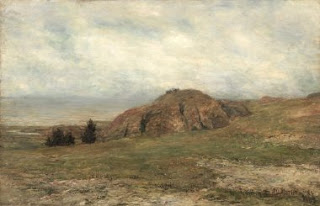In the case of the great masters, their fame is obvious: the genius of their work is easily observed by most people. There are some cases where an old master is lost or falls out of fashion. If an artist’s work has merit, they tend to be rediscovered at some point, even if it takes hundreds of years. These are not the kinds of artists I am thinking of.
The obscure artist tends to be unknown even to many art lovers, relegated to a mere footnote in some book. Their paintings are probably in the catalogs of small regional museums, lacking the clout to draw in the “big names” of art. Fans who visit these museums may discover that they are in storage and not on display. Obscure or unfashionable work is commonly sold off, often for firesale prices.
Obscure artists weren’t usually pioneers or innovators, merely participants in larger art movements. For this reason they tend to be ignored or dismissed as unoriginal. Even a relatively small art movement, such as Tonalism, had many of these followers. Their work can be inconsistent. I have chosen a few artists that caught my eye from the book:
Charles Warren Eaton, The Pine Grove
Charles Warren Eaton, River Landscape
Charles Warren Eaton, Winter Solitude
Lowell Birge Harrison, Moonrise on the Beach
Homer Dodge Martin, Wild Coast Newport
James Henry Moser, Fireworks Across the Potomac
John La Farge, Sea and Rocks Near Spouting Horn
























